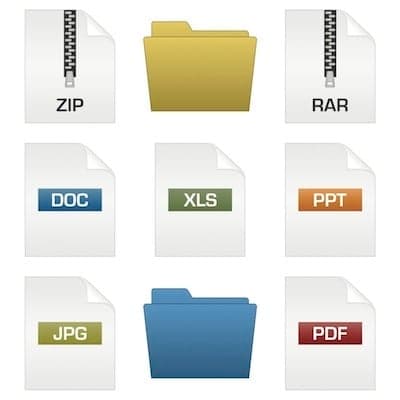When I was first managing others, I remember standing patiently by while an analyst on my team attempted to find a document I needed on her computer. When—five minutes later—she said she couldn't find it and would email it to me as soon as she’d located the file, it left a really poor impression on me (and made me wonder what other balls she might be dropping).
So, take it from me: While naming and organizing your files and folders may not be the sexiest topic I've covered (says the woman who brought you budgeting and Excel tips), I promise you, it's an important one. Not only will having a streamlined online storage system make your life easier and save you a lot of time, it’ll also make you appear more organized and on top of your stuff to your boss and colleagues. Here are your guidelines to live by.
1. Your Desktop is Your Virtual Desk
You know how people tell you to keep your desk clear enough that your boss doesn't think you're a slob? This applies to your computer's desktop, too. It’s the place to put the files you’re working on this week, not the place you should drag every attachment you've ever received.
I recommend paring your desktop down to as few folders as possible. Have one for each big project you're currently working on, as well as your master work folder where you can easily access everything else. If you haven't yet, set your desktop to a grid (so your icons never overlap) and discover the great joy of shortcuts.
2. Folders Should Have a Strategy
I've noticed that most people either over-folder or under-folder, but few get it just right. How to know where you fall? Look at some of your most common or recently used folders, and count the documents in them. If there are dozens and dozens of files, you could probably use a little more structure; whereas if only have one document under Work Files > Client A > 2012 > November > Sales Report, you are definitely a chronic over-folderer.
Here are a few rules I try to stick to:
3. File Names Have a Purpose
When you’re naming a file, pick a phrase that means something. If I get an attachment called DSC1045.jpg or Draft Idea.doc, I have no easy way of knowing what it is—or more importantly, searching for it later. A good test: Imagine finding the file on your desktop after a few months. Would you easily be able to tell what it is? If not, rename.
For documents that you create regularly, like notes for monthly board meetings, it can be easier to distinguish the documents by meeting date rather than topic. Never use Month-Day-Year, since it will sort first by month, then by day, followed by year. Instead, use Year-Month-Date (with month in numbers) so that you can easily sort chronologically. For example: Use 2012-10-27 Board Presentation.pdf instead of Oct27-12 Board Presentation.pdf or 10-27-2012 Board Presentation.pdf. It’ll save you tons of time when browsing and searching later.
4. Version Control, Version Control, Version Control
If you remember anything about file naming, let it be version control. This one is easy. When you first create a document, it should end with v1. For example, I would name a proposal: ClientA Proposal_v1.ppt. Every time you save changes and send it to clients or colleagues, update that to version 2, 3, 4, and so on. Once the document is done, you'll want to save ClientA Proposal_vf.ppt or ClientA Proposal_final.ppt for easy access later. Because there's nothing worse than having to wonder if there was a version 14, or if version 13 was really the final one.
Tell us! Are you an over-folderer or under-folderer? Any tips for organizing your files, folders, and desktop?

